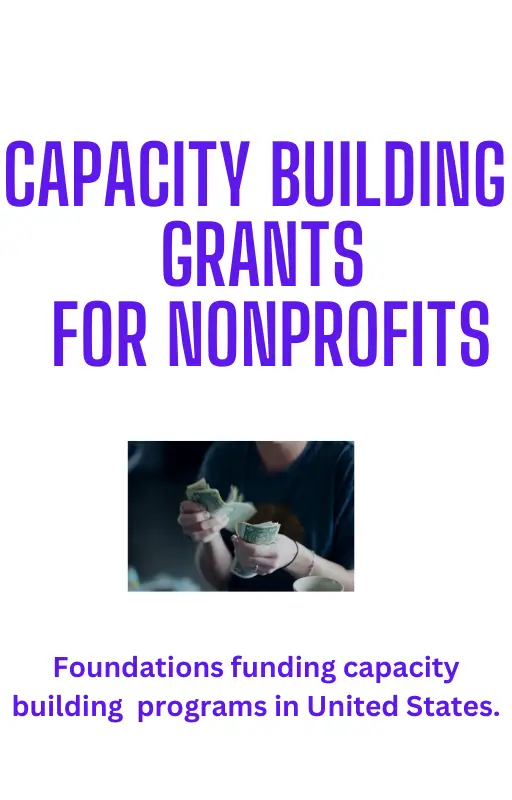Transportation grants are financial allocations provided by governments, non-profit organizations, or private entities to support initiatives aimed at improving and enhancing transportation infrastructure and services.
These grants can fund a spectrum of projects, ranging from the development of sustainable public transit systems and the maintenance of roads to the implementation of innovative technologies for safer and more efficient transportation.
By investing in transportation grants, stakeholders contribute to fostering connectivity, reducing environmental impact, and ultimately creating a more accessible and seamless mobility experience for communities.
The Importance of Transportation Grants
Transportation grants play a pivotal role in shaping the backbone of a society’s mobility infrastructure, offering crucial support for initiatives that extend far beyond the pavement. Here’s an in-depth look at the importance of transportation grants:
- Infrastructure Development: Transportation grants serve as financial lifelines for the development and maintenance of critical infrastructure. They fund the construction and upkeep of roads, bridges, ports, and airports, ensuring the smooth flow of goods and people.
- Economic Growth: Robust transportation networks are vital for economic development. Grants facilitate the expansion of transportation systems, which, in turn, stimulates commerce by making it easier for businesses to transport goods, connect with markets, and access resources.
- Public Transit Improvement: Many transportation grants focus on enhancing public transit systems. By subsidizing initiatives like the expansion of bus routes, construction of transit hubs, and implementation of smart technologies, these grants contribute to more efficient and sustainable urban mobility.
- Accessibility and Inclusivity: Grants can address accessibility challenges by funding projects that make transportation more inclusive. This includes initiatives like building ramps, elevators, and accessible public transport options, ensuring that people with disabilities can navigate the transportation network with ease.
- Environmental Sustainability: As the world grapples with environmental concerns, transportation grants become essential for promoting sustainable practices. Funding electric vehicle infrastructure, bike lanes, and green transportation alternatives helps reduce carbon footprints and fosters eco-friendly mobility solutions.
- Innovation and Technology: Grants provide the necessary capital for the integration of cutting-edge technologies into transportation systems. From intelligent traffic management systems to the development of autonomous vehicles, these funds drive innovation, making transportation safer, more efficient, and adaptive to evolving needs.
- Safety Enhancements: Safety is a top priority in transportation, and grants contribute significantly to achieving this goal. Funding may support initiatives such as improved signage, traffic management systems, and educational campaigns that enhance road safety and reduce accidents.
- Rural Development: In rural areas, transportation grants are instrumental in connecting remote communities to urban centers. By investing in road networks and public transit options, grants play a vital role in reducing isolation and fostering economic opportunities in rural regions.
- Job Creation: The projects funded by transportation grants often generate employment opportunities. Whether through the construction of new infrastructure or the operation of expanded transit services, these initiatives contribute to job creation and economic growth.
List of Foundations awarding Transportation Grants
- Ford Foundation: Focus: Prioritizes grants that address social justice issues in transportation, including equitable access to mobility options and sustainable urban development.
- Rockefeller Foundation: Focus: Emphasizes grants that promote resilient and inclusive transportation systems, with a keen eye on addressing challenges faced by vulnerable communities.
- Bloomberg Philanthropies: Focus: Supports projects that prioritize innovative and data-driven solutions for urban transportation, with an emphasis on reducing environmental impact.
- W.K. Kellogg Foundation: Focus: Invests in transportation grants that contribute to community well-being, particularly those addressing accessibility, safety, and health in marginalized communities.
- Kresge Foundation: Focus: Aims at advancing equitable and sustainable transportation solutions, often supporting projects that integrate transit-oriented development and community engagement.
- Smart Growth America: Focus: Advocates for grants that promote smart urban planning, emphasizing mixed-use development and sustainable transportation choices to build vibrant communities.
- McKnight Foundation: Focus: Supports transportation grants that address environmental sustainability, social equity, and community resilience in both urban and rural settings.
- The Knight Foundation: Focus: Invests in projects leveraging technology to enhance transportation accessibility, with an emphasis on fostering innovation in urban mobility.
- Surdna Foundation: Focus: Prioritizes transportation grants that align with sustainable infrastructure development, emphasizing projects that enhance equity, connectivity, and environmental responsibility.
- Robert Wood Johnson Foundation: Focus: Supports transportation initiatives that intersect with health outcomes, emphasizing projects that encourage physical activity, safety, and access to healthcare.
- National Endowment for the Arts (NEA): Focus: Allocates grants for projects that integrate art and transportation, enhancing the aesthetic and cultural aspects of public spaces.
- National Endowment for the Humanities (NEH): Focus: Supports transportation grants that explore the historical and cultural dimensions of infrastructure development, promoting a deeper understanding of societal progress.
- Tiger Foundation: Focus: Aims at improving transportation infrastructure in underserved communities, particularly supporting projects that enhance connectivity and accessibility for marginalized populations.
- JPMorgan Chase Foundation: Focus: Invests in transportation grants that contribute to economic development, with an emphasis on projects that create job opportunities and improve community connectivity.
- Caltrans Sustainable Transportation Planning Grant Program: Focus: State-specific, California-based foundation supporting projects that advance sustainable transportation planning, innovation, and environmental stewardship.
How to Apply for Transportation Grants
1. Research Grant Opportunities: Start by identifying potential grant opportunities. Explore government agencies, private foundations, and non-profit organizations that focus on transportation initiatives. Thoroughly review their guidelines, eligibility criteria, and the types of projects they typically support.
2. Define Your Project: Clearly define your transportation project. Outline its objectives, expected outcomes, and the impact it will have on the community. Develop a compelling narrative that highlights the significance of your initiative in addressing transportation challenges.
3. Align with Grant Objectives: Ensure that your project aligns seamlessly with the goals and priorities of the granting organization. Tailor your proposal to showcase how your transportation initiative contributes to their mission, whether it’s promoting sustainability, improving accessibility, or fostering innovation.
4. Develop a Detailed Budget: Create a comprehensive budget that outlines all the expenses associated with your transportation project. Clearly articulate how the grant funds will be utilized, demonstrating fiscal responsibility and transparency. Consider all aspects, including construction costs, technology implementation, and ongoing maintenance.
5. Build Strong Partnerships: Collaborate with relevant stakeholders, local communities, and organizations to strengthen your proposal. Partnerships can enhance the credibility and impact of your project, showcasing a collective commitment to addressing transportation challenges.
6. Demonstrate Community Engagement: Many grantors look for projects that actively involve the community. Showcase your efforts to engage with the public, gather input, and address community needs. A robust community engagement strategy can strengthen your application.
7. Craft a Compelling Narrative: Write a compelling and concise narrative for your grant proposal. Clearly articulate the problem your project addresses, the proposed solution, and the anticipated positive outcomes. Use data, testimonials, and visuals to support your case.
8. Emphasize Innovation and Sustainability: Highlight any innovative or sustainable aspects of your transportation project. Grantors often prioritize initiatives that leverage technology, promote environmental responsibility, and contribute to long-term resilience.
9. Address Evaluation and Measurement: Clearly outline how you will measure the success of your transportation project. Establish key performance indicators (KPIs) and explain how you will track and evaluate the impact of the grant funds on achieving your project goals.
10. Follow Application Guidelines: Carefully follow the specific guidelines outlined by the grantor. Pay attention to submission deadlines, required documentation, and any additional information requested. Non-compliance with these guidelines could jeopardize your application.
11. Seek Professional Assistance: If needed, consider seeking assistance from grant writing professionals or consultants. They can provide valuable insights, help refine your proposal, and ensure that your application meets the expectations of the granting organization.
12. Submit a Polished Application: Before submitting your application, thoroughly review and edit all components. Ensure that your proposal is well-organized, error-free, and compelling. A polished application reflects your commitment to the success of the transportation project.
The Impact of the Transportation Grants
- Enhanced Infrastructure: Transportation grants contribute to the development and improvement of infrastructure, resulting in well-maintained roads, bridges, public transit systems, and other essential components. This, in turn, enhances connectivity and accessibility, facilitating smoother and more efficient movement of people and goods.
- Economic Prosperity: The economic impact of transportation grants is substantial. By investing in infrastructure projects, grants stimulate economic growth through job creation, increased business opportunities, and improved access to markets. Efficient transportation networks attract investments, spur entrepreneurship, and contribute to the overall prosperity of regions.
- Job Creation and Skills Development: Infrastructure projects funded by transportation grants generate employment opportunities. From construction jobs to positions in maintenance and operations, these initiatives create a ripple effect, boosting local economies and providing avenues for skill development within communities.
- Community Connectivity: Transportation grants play a pivotal role in connecting communities. Improved road networks and public transit systems foster social connectivity, reducing isolation in rural areas and enhancing accessibility for residents in urban settings. This connectivity strengthens community bonds and facilitates cultural exchange.
- Environmental Sustainability: Many transportation grants prioritize eco-friendly initiatives. Funding for electric vehicle infrastructure, bike lanes, and green transportation alternatives contributes to reduced carbon emissions and mitigates the environmental impact of traditional transportation methods, promoting sustainable practices.
- Safety Improvements: Grants allocate resources to enhance road safety measures. This includes the implementation of advanced traffic management systems, improved signage, and the development of pedestrian-friendly infrastructure. The result is a reduction in accidents and fatalities, creating safer environments for both drivers and pedestrians.
- Innovation and Technology Integration: Transportation grants often fund projects that embrace innovation and technology. Initiatives such as smart traffic management, intelligent transportation systems, and the integration of autonomous vehicles improve efficiency, reduce congestion, and pave the way for future advancements in the transportation sector.
- Public Transit Accessibility: Public transit improvements funded by grants enhance accessibility for diverse populations. Expanded bus routes, the construction of transit hubs, and the integration of accessible features make public transportation a more viable and inclusive option for individuals of all abilities.
- Reduced Traffic Congestion: Infrastructure enhancements and the implementation of smart transportation solutions funded by grants contribute to reduced traffic congestion. This not only saves time for commuters but also has economic benefits by improving the flow of goods and services.
- Quality of Life Improvements: Collectively, the impact of transportation grants contributes to an overall improvement in the quality of life. Communities with well-maintained infrastructure, accessible public transit, and sustainable transportation options experience a higher quality of life, as residents enjoy smoother daily commutes and increased opportunities for recreation and social interaction.
Tips for Writing a Successful Grant Proposal for Transportation Grants
1. Understand the Granting Organization: Research the granting organization thoroughly. Understand their mission, values, and priorities. Tailor your proposal to align with their specific goals and demonstrate how your transportation project complements their vision.
2. Clearly Define Your Project: Start your proposal with a concise and compelling overview of your transportation project. Clearly articulate its objectives, the problem it addresses, and the intended impact on the community. Use data and real-world examples to strengthen your case.
3. Highlight the Need: Clearly emphasize the need for your transportation project. Provide evidence, such as statistics, testimonials, or case studies, to illustrate the challenges your project aims to overcome. Convey a sense of urgency to underscore the importance of your initiative.
4. Develop a Strong Narrative: Craft a narrative that engages the reader from the beginning. Tell a story that conveys the journey of your project, emphasizing its significance and the positive change it will bring. Use language that is clear, concise, and compelling.
5. Align with Grant Objectives: Ensure every section of your proposal aligns with the objectives and priorities of the granting organization. Clearly articulate how your transportation project fulfills their mission, whether it’s promoting sustainability, improving accessibility, or fostering innovation.
6. Demonstrate Community Involvement: Grantors appreciate projects that actively involve the community. Clearly outline your community engagement strategy, showcasing how you have sought input, addressed concerns, and ensured that the project meets the needs of the people it serves.
7. Present a Comprehensive Budget: Develop a detailed budget that outlines all the costs associated with your transportation project. Clearly explain how the grant funds will be utilized, providing transparency and demonstrating fiscal responsibility. Ensure that your budget aligns with the scope and scale of the project.
8. Showcase Partnerships and Collaboration: Highlight any partnerships or collaborations that strengthen your project. Whether it’s working with local governments, businesses, or non-profit organizations, showcase how these collaborations enhance the overall impact and sustainability of your transportation initiative.
9. Emphasize Innovation and Sustainability: If your transportation project incorporates innovative or sustainable elements, make sure to highlight them. Grantors are often interested in supporting projects that leverage technology, promote environmental responsibility, and contribute to long-term resilience.
10. Provide a Detailed Implementation Plan: Outline a clear and realistic implementation plan. Break down the project into phases, specifying milestones, timelines, and key deliverables. A well-structured plan demonstrates your organization’s capacity to execute the project successfully.
11. Address Evaluation and Impact Measurement: Clearly articulate how you will measure the success of your transportation project. Establish key performance indicators (KPIs) and explain how you will track and evaluate the impact of the grant funds on achieving your project goals.
12. Review and Edit Thoroughly: Before submitting your proposal, review and edit it thoroughly. Ensure that your language is polished, and your proposal is free of errors. Consider seeking feedback from colleagues or grant writing professionals to refine your document.
13. Follow Submission Guidelines: Pay close attention to the submission guidelines provided by the granting organization. Ensure that you submit all required documentation, adhere to formatting requirements, and meet the specified deadline. Non-compliance with guidelines can jeopardize your application.
By incorporating these tips into your grant proposal, you’ll enhance your chances of presenting a compelling case for funding. Remember, a successful grant proposal not only conveys the merits of your transportation project but also builds a narrative that resonates with the values and goals of the granting organization.
Conclusion:
transportation grants serve as powerful engines of progress, propelling communities toward enhanced connectivity, economic prosperity, and sustainable futures. As we navigate the intricate web of infrastructure development, innovative technologies, and community engagement, the impact of these grants becomes abundantly clear. They pave the way for smoother commutes, safer journeys, and a network of pathways that weave communities together.
Transportation grants go beyond funding projects; they are investments in the vitality of societies. Through improved infrastructure, job creation, and the embrace of sustainable practices, these grants catalyze positive change. They are bridges connecting disparate elements—people, places, and possibilities.
As we look to the future, the importance of securing and wisely utilizing transportation grants cannot be overstated. Each grant awarded represents a commitment to progress, a pledge to foster inclusivity, and a recognition that the journey toward a better tomorrow begins with well-maintained roads, accessible public transit, and forward-thinking initiatives.
In the ever-evolving landscape of transportation, these grants stand as beacons, illuminating a path toward resilience, innovation, and shared prosperity. By harnessing their potential, we not only build roads and bridges but also forge connections, foster growth, and embark on a collective voyage toward a more connected and sustainable world.
Recommended Books for Enhancing Grant Writing Skills
Here are a few recommended books:
- The Ultimate Guide to Federal Grant Applications: Techniques for Success – This book is a must-read for anyone looking to navigate the complex world of federal grant applications. It offers practical techniques, insider tips, and a comprehensive understanding of what it takes to create successful federal grant applications.
- Advanced Grant Writing for Nonprofits : Focuses on sophisticated techniques for experienced grant writers. It delves into complex aspects of proposal development, offering strategies for dealing with competitive grant environments and large funding bodies.
- Mastering Grant Writing: A Nonprofit’s Guide to Effective Proposal Development and Submission: This book serves as a comprehensive guide, covering the entire process of grant writing. It includes tips on understanding funders’ perspectives, crafting compelling narratives, and the nuances of proposal submission.
- Becoming the Grant Guru: Freelancer’s Guide to Success : Tailored for freelance grant writers, this book provides insights into building a successful career in grant writing. It includes strategies for finding clients, managing projects, and maximizing the impact of grant proposals.
- The Small Business’s Guide to Winning Grants : This resource is particularly useful for small businesses looking to secure grants. It offers practical advice on identifying suitable grant opportunities, understanding the requirements of small business grants, and crafting winning proposals.
- Grant Readiness Guide: Preparing to Triumph in Funding Opportunities : A comprehensive resource for organizations at various stages of grant preparedness. It provides a roadmap for developing organizational capacity, aligning projects with funders’ goals, and creating compelling applications.
- Her Capital: Unlocking Women’s Small Business Grants: Specifically designed for women entrepreneurs, this book offers guidance on navigating the landscape of small business grants for women. It includes insights into grant sources, application strategies, and tips for leveraging grants to grow a business.
Unlock Your Grant Success!





